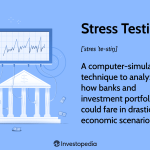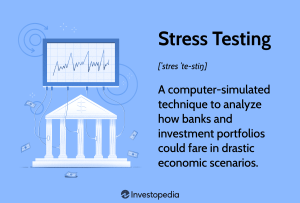Much has been said about how gen AI is making coding more efficient. In the recent past, application programming interfaces, open-source libraries, and crowdsourcing had become common practices to boost developer productivity, and platforms such as StackOverflow.com, Experts Exchange, and Stack Exchange, were popular among software engineers to solve programing-related tasks. But now, LLMs (often trained on data sets engineers have contributed to for years) are overshadowing such platforms and tools.25
For instance, at Standard Bank, AI tools such as Amazon Web Services’ Q, IBM’s watsonx, and Microsoft’s GitHub Copilot, are boosting software engineering efficiency.26 Goldman Sachs has also equipped 12,000 of its developers with gen AI, leading to significant productivity gains.27 As these experiments mature, banks should be able to see the business impact more clearly.
Banks should gain from these productivity-enhancing tools, given the large number of developers they have internally. In fact, large banks have approximately 15% to 25% of their total workforce employed in engineering and digital product–development tasks.28
A recent survey noted that 84% of developers are occasionally or regularly using at least one of the LLM-driven tools such as ChatGPT, GitHub Copilot, JetBrains AI Assistant, or Visual Studio IntelliCode.29 Developers may no longer search for code snippets to complete tasks, but converse with GPT models to update codes or even create code from scratch. Google recently revealed that one-fourth of their new code is being generated by AI, showcasing how AI is reshaping coding.30 Tools such as Claude and Tabnine are providing suggestions and auto-completion for developers while they write code. Of course, there are other tools such as Gemini, AWS Q, Cursor, Replit, and Codiga, each with its own features.31
These coding assistants will likely only get more advanced and useful as time goes by, opening up enormous new possibilities to write faster and better programs, ultimately resulting in significant productivity gains.32 And more recently, there has been an emergence of AI agents that can autonomously33 convert ideas expressed by humans in natural language into executable code. For example, Devin was launched in March 2024, designed to autonomously perform programming jobs, based on prompts from software engineers. These jobs include designing full applications, testing and fixing codebases, and training and tuning LLMs.34
AI-assisted coding also has huge potential in addressing the challenge of modernizing mainframes and legacy codes, such as those in COBOL, which may have been written decades ago. COBOL-driven mainframes continue to govern many banking systems.35 In fact, the industry still relies on billions of lines of COBOL code to run a range of banking applications including payments and ATMs.36 Also, given that the number of experienced COBOL programmers has been shrinking in recent years due to exits from the labor force and diminishing interest among younger developers, generative AI coding assistants could prove most valuable in upgrading legacy mainframes at scale. Some gen AI prototypes, for example, are being trained to rewrite the 1960s-era code that underpins older cores to be compatible with modern software. IBM’s watsonx Code Assistant can read, understand, and rescript COBOL-coded applications in Java.37 This will likely accelerate mainframe modernization across industries by assisting developers in transforming COBOL-driven business services at scale.
One senior vice president of enterprise architecture at a US super regional bank shared their experience: “We’re using [AI coding tools to explain legacy] coding. Explain[ing] is so powerful. Because a lot of these people have left. So forget about writing new code. Even understanding the existing code is a big deal in a lot of these. Some things are like a black box for us. Somebody wrote it some years ago … nobody wants to touch [it], so we work around it, because we don’t know how to read that code.”
Beyond coding itself, software testing is another area that is rapidly being transformed by AI. Testing software has become more challenging in recent years. The rapid acceleration of release cycles, maintaining test coverage across complex architecture, reliance on third-party solutions, and the significantly high usage of APIs have resulted in higher complexities.38 To fight against these limitations, AI testing tools are becoming more common among developers. Increasingly, engineering teams are also keen to delegate a large portion of “writing tests and writing natural language artifacts” to machines. These testing tools, such as Selenium and Code Intelligence help with self-correcting, automatic test-case generation. They can have other benefits as well, including testing at scale and continuous improvement through self-learning algorithms. AI-generated test cases can also confirm the correctness of LLM-generated codes. According to another Deloitte survey, over half of the global respondents have already prioritized enhanced testing and validation protocols to address gen AI-driven software development quality needs.39 Synthetic data creation can also help banks reduce real-world data dependencies without compromising on the quality of testing.
AI-driven tools are also helping in software design. For instance, system engineers can use natural language to feed requirements into AI tools, which can propose the initial design. These tools can offer alternative design, and respective trade-offs. Generative AI tools can also assist software engineers to better understand the connections between different systems within banks. AI-powered engineering or MLOps can also help the integration of DevOps, DataOps, and ModelOps interlacing machine learning into the process of data management, model training, and software delivery.40
link











More Stories
Construction Begins On The Perennial, A $150 million, 145-unit Intergenerational Housing Development In Forest Hills
Techniques, Purpose, and Real-World Examples
CMHC Refinance for Building Secondary Suites |CMHC